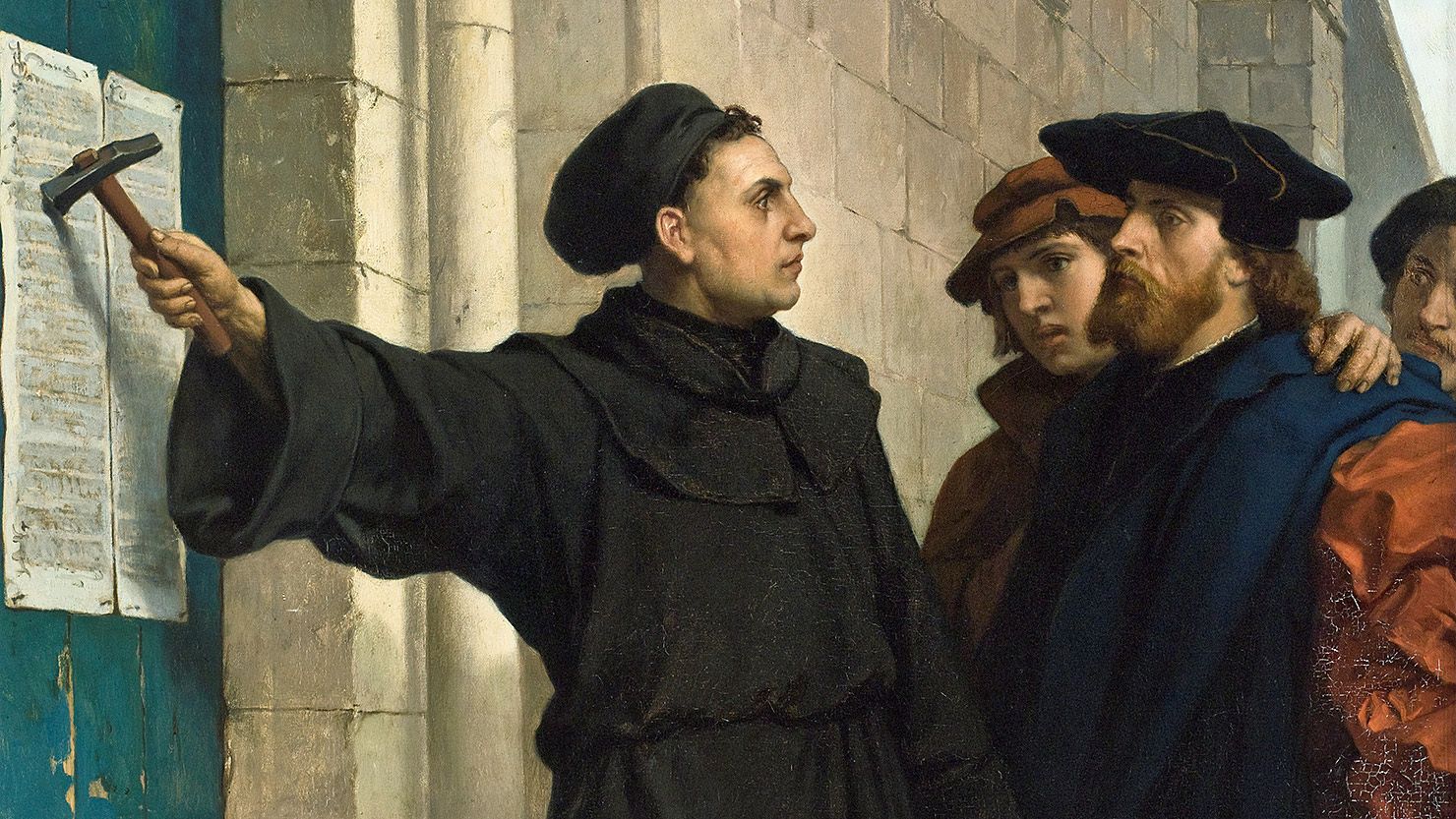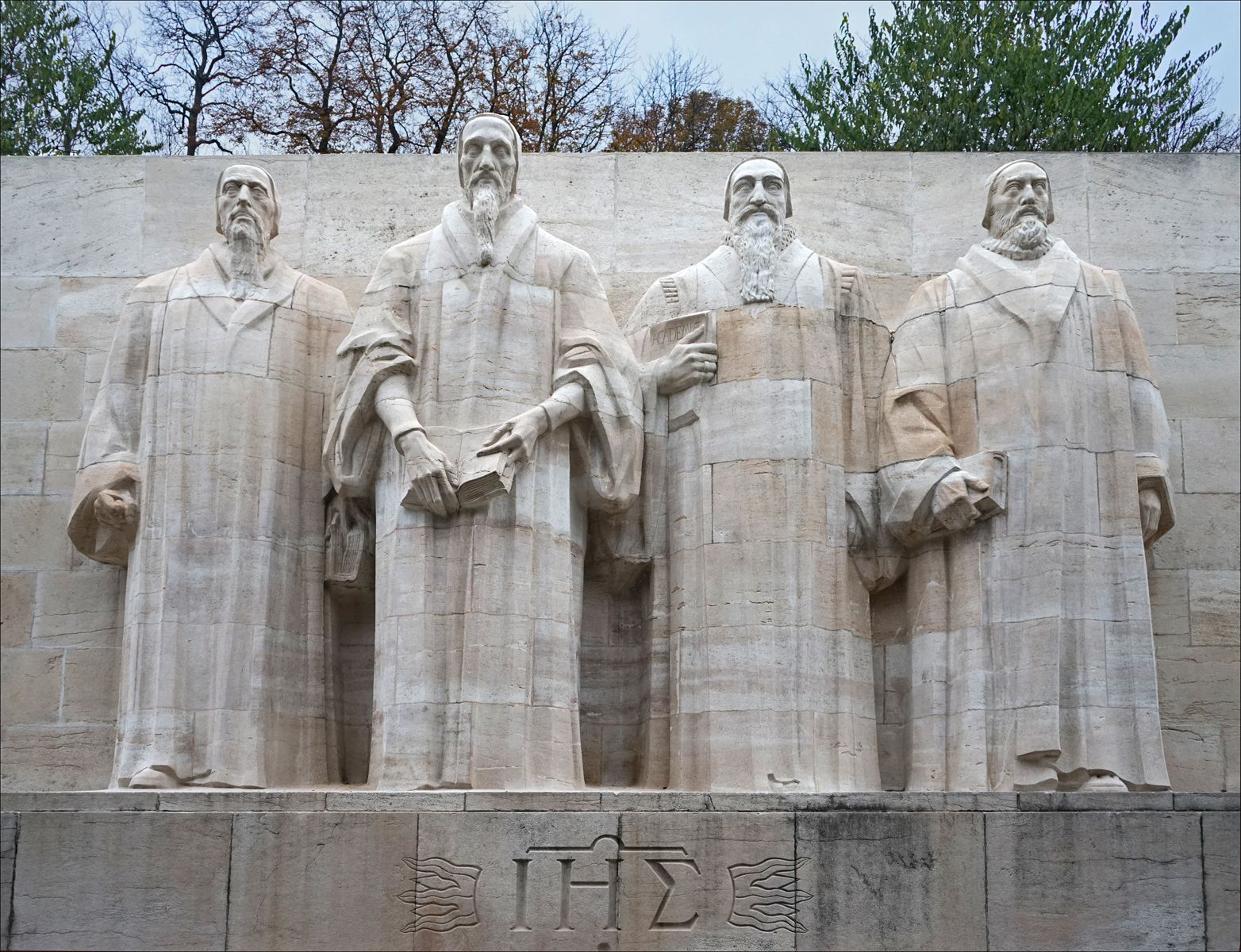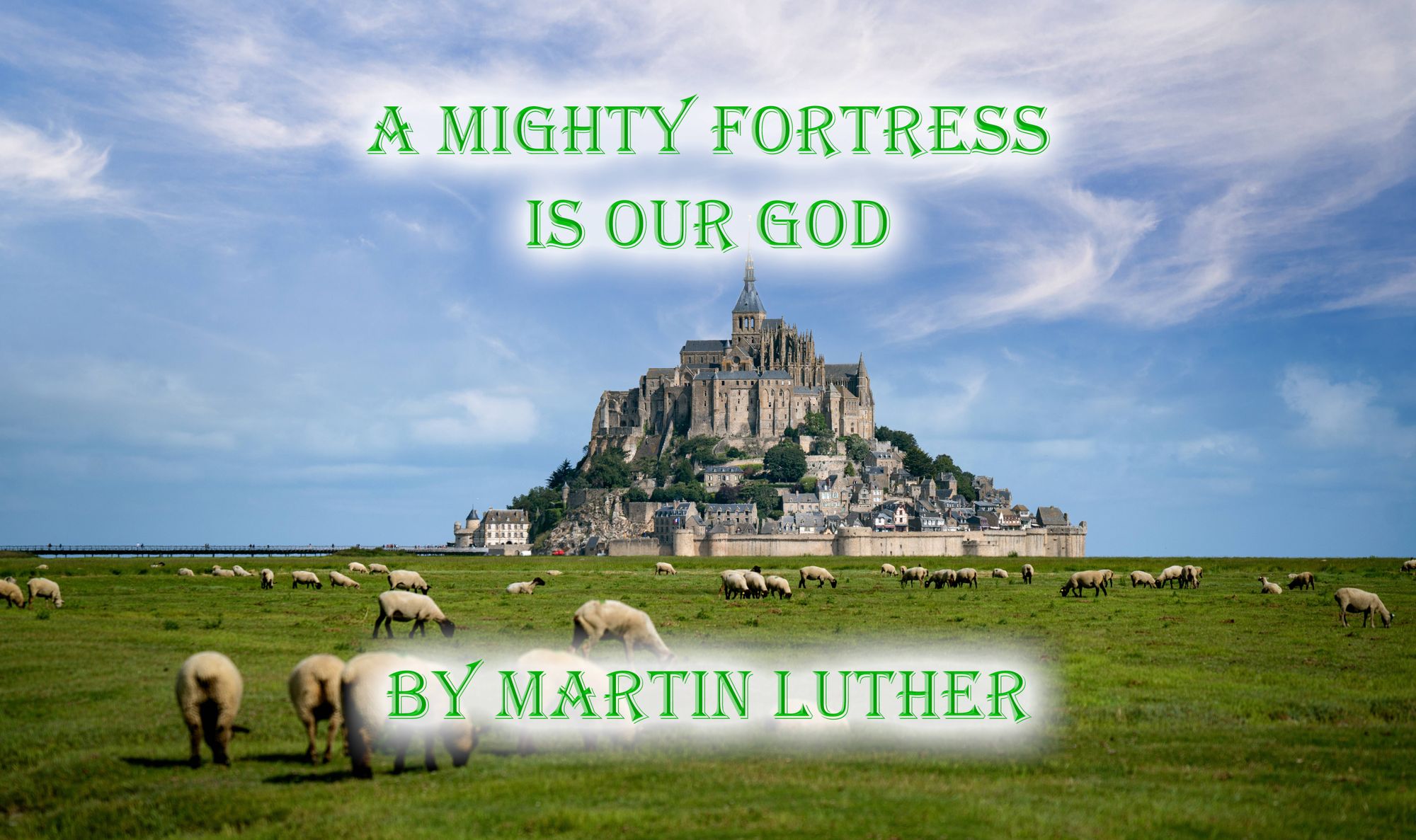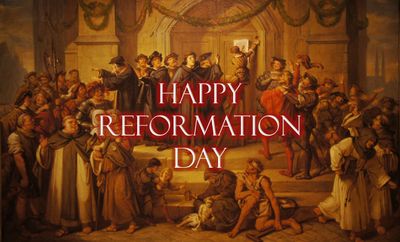Happy Reformation Day! We want to take a few minutes to remember the significance of this day and consider how the motivations of Martin Luther and the other reformers should guide our thinking as faithful Christians in the modern age.
Sparking a Reformation
Today we celebrate the momentous event that occurred on October 31st in the year 1517. It was on that day that the great reformer, Martin Luther, nailed his Ninety-five Theses to the door of the Castle Church in Wittenberg, Germany, thereby sparking the Protestant Reformation.

History of the Celebration
According to the Encyclopædia Britannica, Reformation Celebrations originally took place on various days of significance in the life of Luther. However, when the centennial celebrations of 1617 occurred, attention was focused on the date of October 31st.
The European Lutheran territorial churches at first commemorated the Reformation on various days, among them the anniversary of Luther’s birth (November 10), his death (February 18), and presentation of the Augsburg Confession (June 25). The centennial celebrations of 1617 focussed attention on October 31; in the sesquicentennial year (1667) Elector John George II decreed this date as annual Reformation Day in Saxony.
German Lutheran and Union territorial churches have come gradually to follow this example and specify October 31 or the Sunday following (or preceding). Among English-speaking Lutherans, the churches that use the Lutheran Liturgy (1948) keep October 31 as Reformation Day; those using the Service Book and Hymnal (1958) observe October 31 as Reformation Day and may keep the preceding Sunday as Reformation Sunday. The liturgical colour is red. Many churches in the Reformed and the Evangelical traditions also mark the day, often with special services focussed on the Reformation and its effects. 1
The Reformer's Time and Context
At the time that Martin Luther lived, the Roman Catholic Church had deviated greatly from the beliefs and practices of the true apostolic and catholic Church. By that we mean the universal Church that Christ founded, which is the body of those saved by Christ in every generation. To be certain, there were a great many truly saved who were in the Roman Catholic communion, but those in power were clearly allured by wealth and power and had strayed from the true faith in significant ways.
The Roman Church preached a works-based salvation that must be maintained through regular partaking of the sacraments. One's salvation was always at risk of being lost, and even those who were ultimately saved expected to face thousands or even millions of years suffering in Purgatory before ever seeing Heaven's gates. The Bishop of Rome had placed himself in the seat of Christ on earth, calling himself the "Pope" and "Vicar of Christ", professing to be the chief authority over all Christians and churches. The leaders of the Roman Church did not want the Holy Scriptures to be available to the common people in their own languages. Bibles were written only in Latin and were not available to anyone except priests and the wealthy.
Pope Leo X

Pope Leo X became the head of the Roman Church in 1513. One of the chief aims of his papacy was the reconstruction of St. Peter's basilica. The funding of this project drove an expansion of the practice of offering indulgences in exchange for money, leading to significant abuses and corruption. The practice of selling indulgences was a financial scheme that manipulated the peasantry into giving money beyond their tithes and offerings in exchange for the promise of less time in Purgatory for themselves and their deceased loved ones.
Motivations of the Reformer
Martin Luther, a priest and professor of theology, noticed the contradictions between the teachings of the Roman Church and what he read for himself in Scripture. The Bible spoke of salvation being a free gift of God to those who believe, rather than something maintained through works. Luther called the Church to return to belief in salvation by grace alone through faith alone. He could also find no Scriptural support for many of the practices he witnessed the Roman Church engaged in, including telling the poor that they could get to heaven faster through the purchase of costly indulgences.

Martin Luther intended to bring his concerns to the attention of his beloved Church in hopes of seeing it reformed. His protest was never intended to divide the Church in the West, rather he hoped it would bring repentance and reformation to the Roman Church's leadership. Luther wanted to see Holy Scripture re-established as the sole infallible rule of faith and practice and he hoped to reign in many of the excesses which were causing so much damage to his fellow Christians. Unfortunately, the response of the Roman Church's leadership was one of defense and retaliation rather than contrition and repentance.
Luther was brought to trial before the church, and the court attempted to force him to recant. Luther’s response is often quoted: “I cannot choose but adhere to the Word of God, which has possession of my conscience; nor can I possibly, nor will I even make any recantation, since it is neither safe nor honest to act contrary to conscience! Here I stand; I cannot do otherwise, so help me God! Amen.” 2
The Reformation Spreads like Wildfire

From Germany, the Protestant Reformation expanded through Europe, influencing the work of John Calvin in Geneva, Ulrich Zwingli in Zurich, and John Knox in Scotland. The Reformation Luther led also sparked the Anabaptist (free church) movement and the English Reformation. These movements, in turn, influenced the spread of Christianity to the Americas and throughout the world where European exploration took place. South Africa, India, Australia, and New Zealand all felt the impact of Luther’s hammer in Wittenberg. 4
Christians are indebted to the Reformation for many things. It sparked a renewed appreciation of the Bible as the authoritative Word of God and a return for many to a biblical understanding of salvation. People began to have increased access to the Scriptures in their own common languages. Even the Roman Catholic Church, while still holding to dangerous doctrinal error, was forced to undergo a Counter-Reformation that somewhat improved conditions for those who did not join with the Protestants.
Luther believed the Word of God was the supreme authority for the Christian faith, rather than tradition or papal decrees. In the process of bringing the Scriptures to the common person, Luther translated the Bible into German, published numerous books and sermons of biblical teachings, and composed numerous hymns based on biblical themes. Many of his hymns are still sung today. 5
Bringing the Reformation Home
Our prayer is that you and your family will celebrate this Reformation Day with a renewed appreciation for the great inheritance we've received from our spiritual forebearers. God is continuing to sanctify and grow His Church. Let us consider how we each may be used of Him to bring glory to His name and for the furtherance of His Kingdom.
We encourage you to take a look at our recent post, A Mighty Fortress is Our God, to learn more about Martin Luther's famous hymn and its role in the Reformation.

Solus Christus
Sola Gratia
Sola Fide
Soli Deo Gloria
Semper Reformanda
Homeschool Kid sings "A Mighty Fortress"
A Mighty Fortress is our God - Verse One
A Mighty Fortress is our God - Verse Two
A Mighty Fortress is our God - Verse Three
A Mighty Fortress is our God - Verse Four
Footnotes
1. Encyclopædia Britannica. (2016). "Reformation Day" In Encyclopedia Britannica (Logos Edition). Chicago, IL: Encyclopædia Britannica.
2. Got Questions Ministries. (2002–2013). "What is Reformation Day?" Got Questions? Bible Questions Answered. Bellingham, WA: Logos Bible Software.
3. Jean-Pierre Dalbéra from Paris, France, CC BY 2.0, via Wikimedia Commons
4. Got Questions Ministries. (2002–2013). "What is Reformation Day?" Got Questions? Bible Questions Answered. Bellingham, WA: Logos Bible Software.
5. Ibid.





Join the conversation